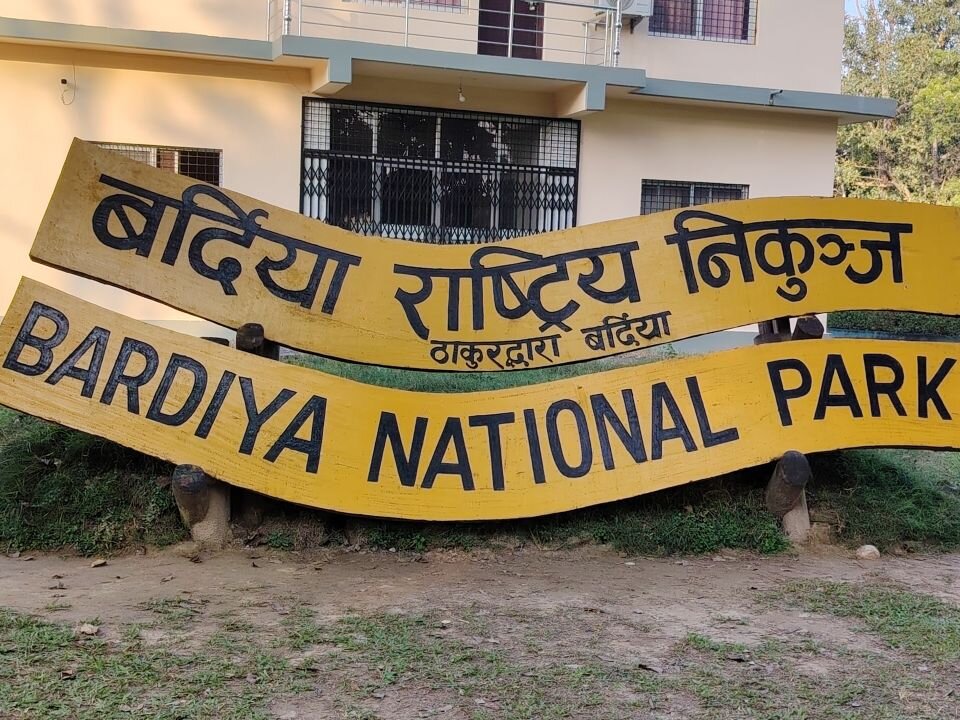Premium Only Content

Bardiya National Park
Bardiya National Park, situated in the western Terai region of Nepal, is one of the country’s most extensive and ecologically diverse protected areas. Covering an area of approximately 968 square kilometers, the park lies in Bardiya District of Lumbini Province and was officially established in 1988. Before its designation as a national park, the area was a royal hunting reserve known as the Bardiya Wildlife Reserve, which was created in 1976. Its transformation into a national park marked a significant milestone in Nepal’s efforts to conserve the rich biodiversity of the lowland Terai ecosystem.
The park is bordered by the Karnali River to the west, while the Babai River flows through its core, creating a mosaic of habitats that support a wide variety of flora and fauna. The landscape is dominated by dense sal (Shorea robusta) forests, interspersed with grasslands, riverine forests, and wetlands. This combination of habitats provides a refuge for some of the most endangered wildlife species in Asia. Bardiya is particularly famous for its population of Royal Bengal tigers, one-horned rhinoceroses, Asian elephants, gharial crocodiles, and Gangetic dolphins. It also shelters more than 400 species of birds, including the great hornbill, lesser adjutant stork, and bengal florican.
In addition to its ecological importance, Bardiya National Park holds significant cultural and social value. The area surrounding the park is home to the Tharu community, an indigenous ethnic group known for their unique traditions, dances, and harmonious relationship with nature. Their traditional lifestyle and knowledge systems contribute to sustainable resource use and help maintain the ecological balance of the region.
Bardiya offers rich opportunities for eco-tourism and wildlife observation, with jungle safaris, rafting on the Karnali River, and birdwatching among the most popular activities. Visitors may also encounter species such as spotted deer, wild boar, swamp deer, blue bull, and various species of monkeys. Despite its natural beauty and abundance of wildlife, Bardiya remains less commercialized than Chitwan National Park, giving visitors a more tranquil and authentic wilderness experience.
Today, Bardiya National Park stands as a symbol of Nepal’s commitment to biodiversity conservation and sustainable development. Through continued efforts in anti-poaching, community involvement, and habitat restoration, the park not only protects rare species but also supports the livelihoods and cultural heritage of local people. It remains a vital part of Nepal’s natural heritage — a sanctuary of life, culture, and beauty where the rhythm of the wild still beats strong.
-
 1:01:44
1:01:44
BonginoReport
2 hours agoHalf Naked Trucker Nabbed In Traffic Stop - Nightly Scroll w/ Hayley Caronia (Ep.166)
28.3K37 -
 LIVE
LIVE
The Jimmy Dore Show
1 hour agoCandace Owens NOT BUYING TPUSA’s Mikey McCoy Defense! Israel WON’T STOP Breaking Gaza Ceasefire!
5,532 watching -
 LIVE
LIVE
Dr Disrespect
8 hours ago🔴LIVE - DR DISRESPECT - BATTLEFIELD 6 - REDSEC DUOS - WIN WIN WIN
1,292 watching -
 LIVE
LIVE
Mally_Mouse
9 hours ago📣Telescreen Talks - LIVE!
98 watching -
 LIVE
LIVE
Quite Frankly
5 hours agoAggressive Texting, Practice Citizenship Test, Fed vs Fed | 10/29/25
277 watching -
 LIVE
LIVE
The Mike Schwartz Show
1 hour agoTHE MIKE SCHWARTZ SHOW Evening Edition 10-29-2025
3,838 watching -
 LIVE
LIVE
SavageJayGatsby
2 hours ago📣Telescreen Talks - LIVE!
54 watching -
 1:03:00
1:03:00
TheCrucible
2 hours agoThe Extravaganza! EP: 62 with Guest Co-Host: Rob Noerr (10/29/25)
66.4K6 -
 1:42:41
1:42:41
Redacted News
3 hours ago"Their goal is CIVIL WAR in the U.S." Americans Fighting Over SNAP Food Stamps | Redacted News
104K107 -
 1:00:21
1:00:21
Candace Show Podcast
2 hours agoWhy Isn't The Trump Family Asking Questions About Charlie Kirk? | Candace Ep 254
35K178